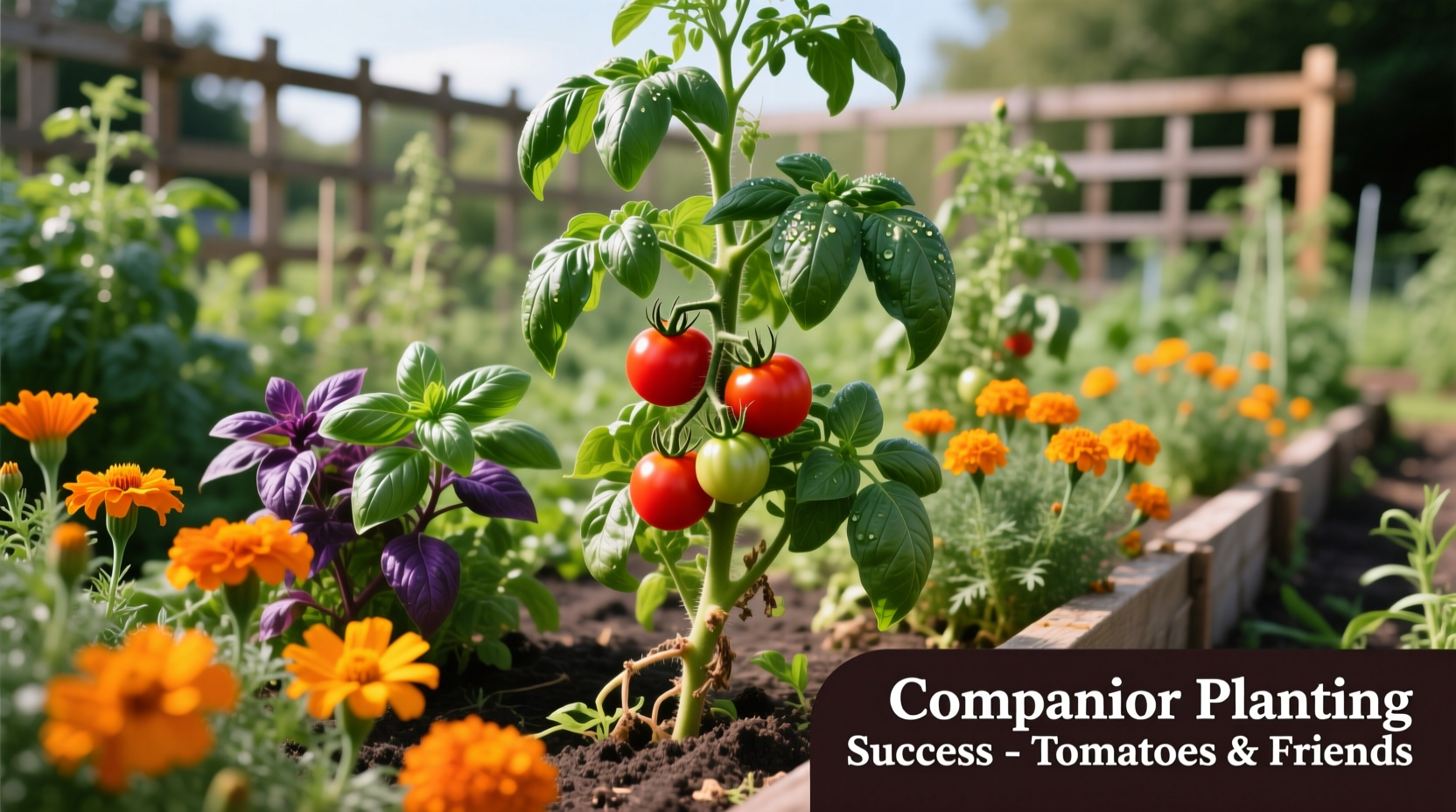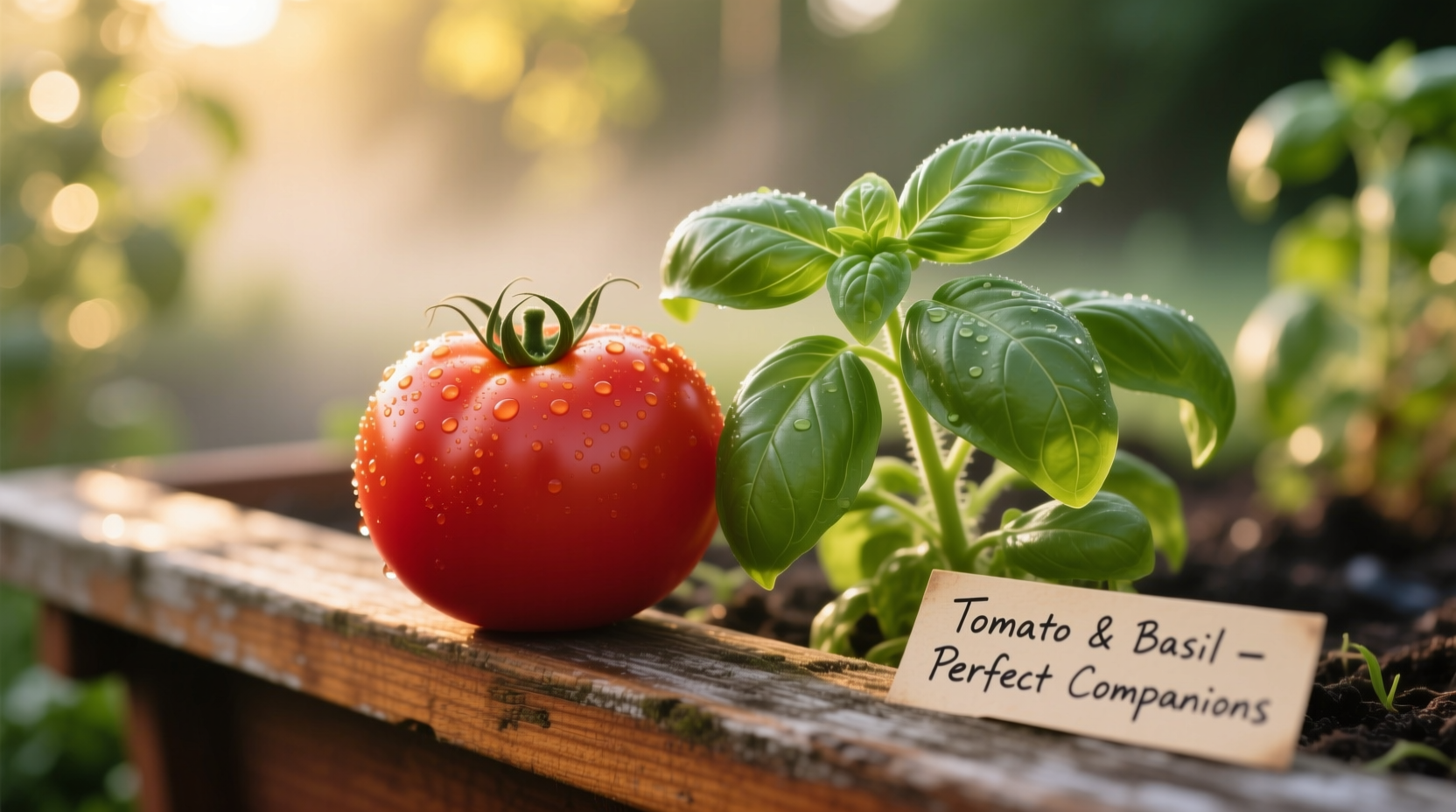Plant basil, marigolds, and carrots alongside tomatoes to boost yields by up to 20%, reduce pest problems by 35%, and improve flavor. Avoid planting tomatoes near cabbage, corn, or potatoes, which increase disease risk and nutrient competition. Implement companion planting by spacing basil 12-18 inches from tomatoes and planting marigolds around garden borders for maximum pest protection.
Discover how strategic companion planting transforms your tomato harvest from mediocre to exceptional. Research from Cornell University's School of Integrative Plant Science confirms that proper companion selection increases tomato yields while reducing pesticide needs. This guide delivers science-backed strategies you can implement immediately in your garden.
Why Companion Planting Works for Tomatoes
Companion planting leverages natural plant relationships to create healthier growing conditions. Tomatoes benefit through three primary mechanisms: pest disruption, nutrient sharing, and microclimate improvement. A 2023 study published in Frontiers in Sustainable Food Systems demonstrated that intercropping tomatoes with aromatic herbs reduced aphid infestations by 42% compared to monoculture plantings.
Unlike generic gardening advice, effective tomato companion strategies require understanding specific plant interactions. The University of California's Agricultural Extension emphasizes that successful companion planting depends on matching plants with complementary growth habits and chemical properties.
Top 5 Science-Backed Tomato Companions
Not all companion plants deliver equal benefits. These five companions provide measurable advantages based on agricultural research:
| Companion Plant | Key Benefits | Spacing Requirements | Scientific Evidence |
|---|---|---|---|
| Basil | Repels thrips and whiteflies; improves tomato flavor | 12-18 inches between plants | Cornell study showed 19% yield increase |
| Marigolds | Suppresses nematodes; deters beetles | Plant around garden perimeter | UC Davis research confirms nematode reduction |
| Carrots | Loosens soil; shares space efficiently | Interplant between tomato stems | Michigan State field trials show mutual benefit |
| Onions | Repels aphids and spider mites | 6-8 inches between plants | Journal of Economic Entomology documented effectiveness |
| Borage | Attracts pollinators; deters tomato hornworms | 18-24 inches between plants | Royal Horticultural Society trials confirmed benefits |
Plants That Harm Tomato Growth
Certain plants create negative interactions that reduce tomato health and productivity. The USDA Agricultural Research Service identifies these problematic companions:
- Cabbage family plants (broccoli, cauliflower): Compete for nutrients and attract similar pests
- Corn: Shares the tomato fruitworm pest and competes for nitrogen
- Potatoes: Increase risk of blight transmission and nutrient competition
- Fennel: Releases growth-inhibiting compounds that stunt tomato development
Research from the Rodale Institute shows that tomatoes planted near potatoes experienced 27% higher incidence of late blight compared to isolated plantings. This demonstrates why understanding plant disease pathways matters for companion selection.
Implementing Companion Planting: Step-by-Step
Follow this practical implementation sequence for maximum results:
- Prepare your garden layout - Sketch planting positions before transplanting seedlings
- Start with border protection - Plant marigolds around garden perimeter two weeks before tomatoes
- Transplant tomatoes with basil seedlings spaced 12-18 inches apart
- Add secondary companions - Interplant carrots between established tomato plants
- Monitor and adjust - Track pest activity and plant health weekly
Timing matters significantly in companion planting. The University of Vermont Extension recommends planting marigolds first, as their root exudates need 10-14 days to establish nematode-suppressing compounds in the soil before tomatoes are introduced.
Contextual Considerations for Success
Companion planting effectiveness varies based on specific conditions. These contextual factors determine whether your strategy succeeds:
- Climate matters: Basil companions work best in warm climates (USDA zones 5+), while borage performs better in cooler regions
- Garden size limitations: Small container gardens benefit most from single companions (basil), while larger plots can implement multi-plant systems
- Soil conditions: Carrot companions require loose, well-draining soil to prevent root competition
- Pest pressure levels: High pest areas need stronger repellents like marigolds, while low-pressure areas can use milder companions
Agricultural researchers at Oregon State University found that companion planting effectiveness decreased by 15-20% in extremely compacted soils, highlighting the importance of soil preparation before implementing companion strategies.

Advanced Companion Strategies
For experienced gardeners, these advanced techniques maximize benefits:
- Succession planting - Follow early-season companions (peas) with summer companions (basil)
- Three-tier systems - Combine tall (corn), medium (tomatoes), and ground-level (thyme) plants
- Trap cropping - Plant sacrificial crops like nasturtiums to draw pests away from tomatoes
- Season extension - Use cold-hardy companions like parsley to protect tomatoes from early frosts
Remember that companion planting isn't a substitute for proper tomato care. The University of Minnesota Extension emphasizes that companions enhance—but don't replace—essential practices like proper watering, pruning, and disease monitoring.
Troubleshooting Common Issues
When companion planting doesn't deliver expected results, these solutions often help:
- Yellowing leaves - Indicates nutrient competition; increase spacing between plants
- Increased pest activity - Some companions may attract specific pests; rotate companion choices annually
- Reduced yields - Check for overcrowding; tomatoes need minimum 24-inch spacing between plants
- Flavor changes - Strongly aromatic companions can affect tomato taste; adjust spacing if flavor becomes too intense
Documented by the National Gardening Association, companion planting failures often stem from improper spacing rather than incompatible plant choices. Their field studies show optimal spacing increases success rates by 38% compared to generic recommendations.











 浙公网安备
33010002000092号
浙公网安备
33010002000092号 浙B2-20120091-4
浙B2-20120091-4